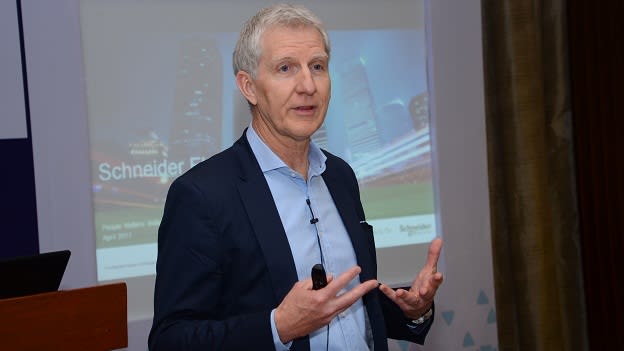Engaging multiple generations at the workplace

In the backdrop of the rapidly changing workforce demographics, and the resulting evolution in workplace dynamics, it becomes imperative for organizations to be at the top of their game in ensuring an inclusive environment for individuals from each generation. In an exclusive conversation with People Matters, Marc Bochirol (Senior VP HR Building & IT Business, Schneider Electric) shares his thoughts on managing a multigenerational workplace, customizing programs and enabling diverse generations to effectively collaborate at work.
What are the challenges you face, in managing a multigenerational workforce across geographies?
While we have offices in US, Europe and Asia, there are some common challenges across these regions. For the first time, we have so many generations working together everywhere. These generations have different expectations. So, the first challenge is to design policies and strategies in order to address all these different generations.
The newest generation, i.e. the millennials behave a bit differently, probably because of the way they were educated, and the digital environment in which they’ve grown up. At work, they often seek answers to the questions “What’s in it for me?”, and “How can you design policies which are important for me?” These differences bring in some new challenges for us as HR professionals.
What are the major positives that arise from having a multigenerational workplace, from an organizational perspective?
The diversity of having different generations and hence, different states of mind is extremely positive. Reverse mentoring is happening for digital learning, as a result of which, people aged 45-50 years are now experimenting with how to work in a digital environment, which is not the case for the new ones, as they were born in it. The infusion of creativity and innovation into the organization is another big positive, that comes naturally along with the newer generations. The aim is to keep these positives and make sure that inclusion, which is essentially the capacity to have all these diversities work together, is at the top of the minds of leaders and the HR function.
What are the different levers or dimensions that we will have to re-assess within the organization, to be able to create an inclusive environment?
Talking of our own experiences at Schneider Electric, we redesigned the people strategy of our organization two years ago, under the leadership of our new CHRO. We designed our strategy around six pillars, each of which brings customization to the target segment of the workforce.
These six pillars are high performance, leadership, learning, diversity & inclusion, well-being and talent. All of these pillars have some commonalities, and are connected to each other in some form or the other. While some of these initiatives address the entire population, the others are designed with a focus on the leaders.
With the influx of the new generation, we need to have customization of our policies, as one size cannot fit all. At the same time, we need to have some common ground rules as well. How do you create a common language for all, that is simultaneously flexible too?
One important point is to make our managers more accountable than they used to be, in the short term. This will enable us to ensure the uniformity of processes and principles, globally. In order to customize this, the managers need to be empowered. They need to clearly understand the transformation we want them to lead, so that they can effectively manage these transformations locally. We spend 1 year with each of the managers to explain the people transformations, and also why these people transformations are so important, from the business perspective.
Another example is of debriefing the managers about the guidelines, and providing them data about various HR policies like compensation, rewards etc. In this way, we are empowering the manager to take charge of some processes that were earlier owned by HR, and pass on the control to them.
What have been your experiences around creating an environment where the learner drives the learning agenda, in organizations?
In order to underscore the importance of learning, we have convinced the entire organization to have at least one full day of training for all individuals, across levels and generations. While we are still at the halfway stage of this initiative, in terms of defining the duration and mode of training, more than 95 percent of the workplace has implemented it by now. We are promoting learning as a fun activity, and emphasizing on digital learning, in order to drive the initiative towards favorable outcomes.

















